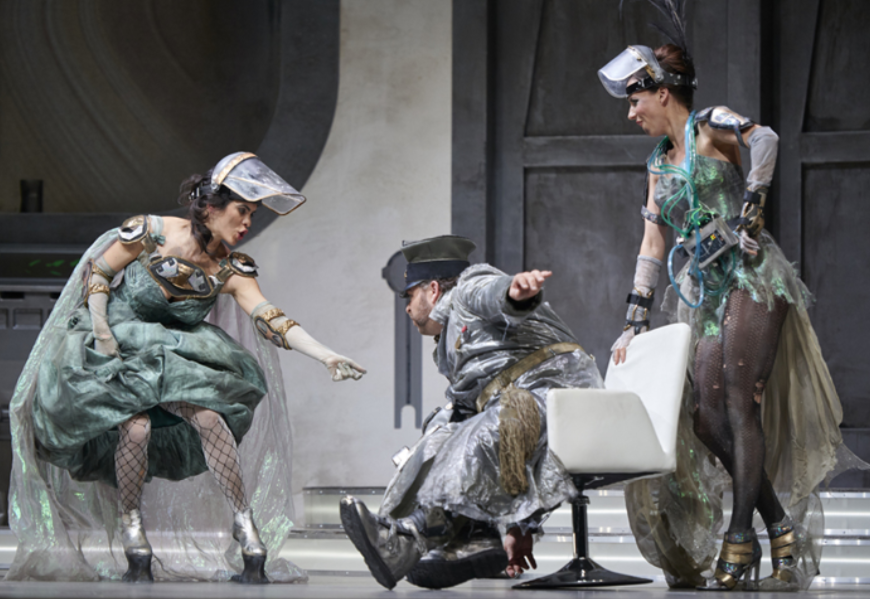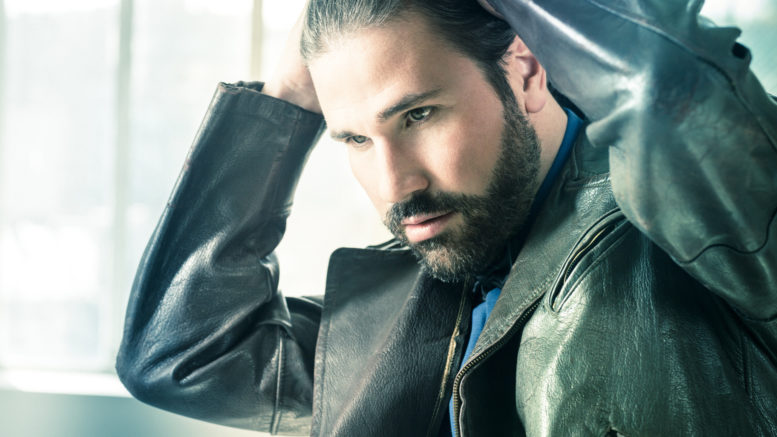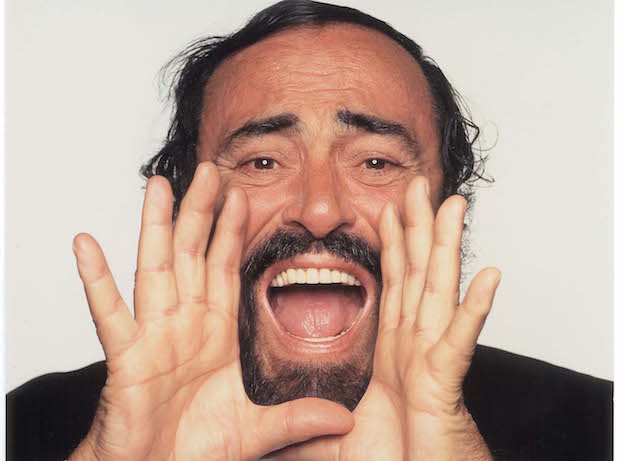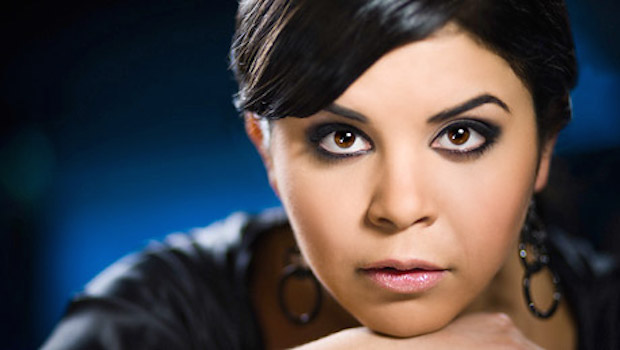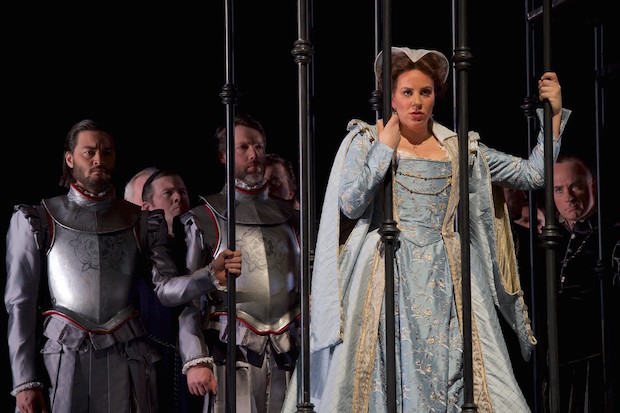
Seattle Opera presented last weekend its premiere of Donizetti’s Mary Stuart, an opera based on the rivalry between two queens, Elisabeth I of England and the catholic Queen of Scots Mary Stuart. Although both historical characters never met each other in the real life, the libretto builds a powerful drama and motivates some of Donizetti’s most inspired tunes.
The production came from the Minnesota Opera and was directed by Kevin Newbury, with costumes by Jessica Jahn and Neil Patel signed the set design. All of them new to the Seattle Opera, they gathered a remarkable success. The scenic proposal was simple yet smart and intelligent. It included a set of mobile modules operated from a moving wooden ceiling. Mary Stuart‘s action always takes place indoors, a fact that was conveniently underlined by the setting we saw at the McCaw Hall, recreating a subtle atmosphere of oppression, in line with the political and religious issues that surround the story. The period costumes contributed to compensate the scenic nudity, whereas the movement of the artists obeyed a wisely designed patron, which used the chorus members as another visual resource.
But an opera like Mary Stuart requires a sound group of singers. The Seattle Opera achieved to put together two well-balanced casts. Italian soprano Serena Farnocchia had announced she wouldn´t sing the title role in the premiere because of illness, so Joyce El-Khoury played the role of Mary Stuart both days. Despite such a challenging tour de force, the Canadian-Lebanese soprano was the most successful artist of both casts. She was responsible for some of the best moments of the show, performing a fascinating Mary Stuart, both vocally and dramatically. She was a proud yet human queen, able to love, hate and forgive with the same passion and elegance. Her voice, finely tuned and beautifully homogeneous, managed easily all the challenges of the score. She gave several splendid samples of belcanto style: her tasteful dark middle voice or the great control of the fiato (breathing) along with her well delivered high notes. Her breathtaking use of the piano tones produced some exquisite moments, like the aria of the first act or the scene of the prayer. Do not miss this soprano, probably one of the finest of her generation.

Soprano Mary Elisabeth Williams, a former Seattle Opera Young Artist, played the role of Queen Elisabeth on Saturday. Her performance was believable and appealing, although her voice weakened in the higher notes. She has a big voice which hits its best features in the mid-lower register, with some rich and colorful notes. She performed the confrontation scene emphatically, showing a pretty good understanding with Joyce El-Khoury, despite the lack of rehearsals together. The same role was played by Keri Alkema. We missed more risk and imagination in her singing. The score asks for a more committed interpretation, in order to depict all the different dramatic sides of the character. Several of Ms. Alkema´s low notes sounded a bit hollow and she seemed to struggle with Italian pronunciation. The audience at the McCaw Hall enjoyed her nice medium register and ringing highs.
The role of Roberto Leicester was served by tenors John Tessier (Saturday) and Andrew Owens (Sunday). Mr. Tessier showed a strong technique and a fine diction. His light lyric tenor voice sounded clear and bright but not very big. His vocal line runs easily throughout the whole register, with a good projection in the upper range, deserving the applause of the hall. Mr. Owens was a young and passionate Leicester. He made some iffy portamenti at the beginning of some phases and sung with a pronounced color difference between the chest and head registers. He saved his appearance thanks to his shiny high notes and an energetic presence on stage. He has got a consistent technique (based on the head resonance) and a big margin to become a greater artist.
Michael Todd Simpson (Cecil) was a pushing and fundamentalist Queen Elisabeth´s counselor. Despite the pleasant sound of his voice, he sang sometimes too open and spinto. American baritone Weston Hurt was an elegant and musical Talbot, featuring a nicely delivered vocal line. Mezzo Renée Rapier debuted in Seattle with an irreproachable maid Hannah, demonstrating her solid vocal faculties.
Seattle Opera chorus gave a nice rendition of the scene of the prayer and contributed rising the overall artistic level of the show. They merited also a long applause after the Catholics chorus. The orchestra was composed of members of the Seattle Symphony Orchestra and directed by the Italian conductor Carlo Montanaro. He managed well the ensembles and both finales but speeded up too much in the cabalettas.
Mary Stuart is about two powerful women separated by politics, faith and love. Donizetti focused in love, though. He developed the romantic triangle Mary-Leicester-Elisabeth as the keystone of the story. He found the most dramatic moments of the opera in the simple humanity of the queens. They are two loving women who pursued a happiness that was always opposed to her duties as monarchs. As usual, everything is in the music, waiting to be discovered.
Carlos J. Lopez









